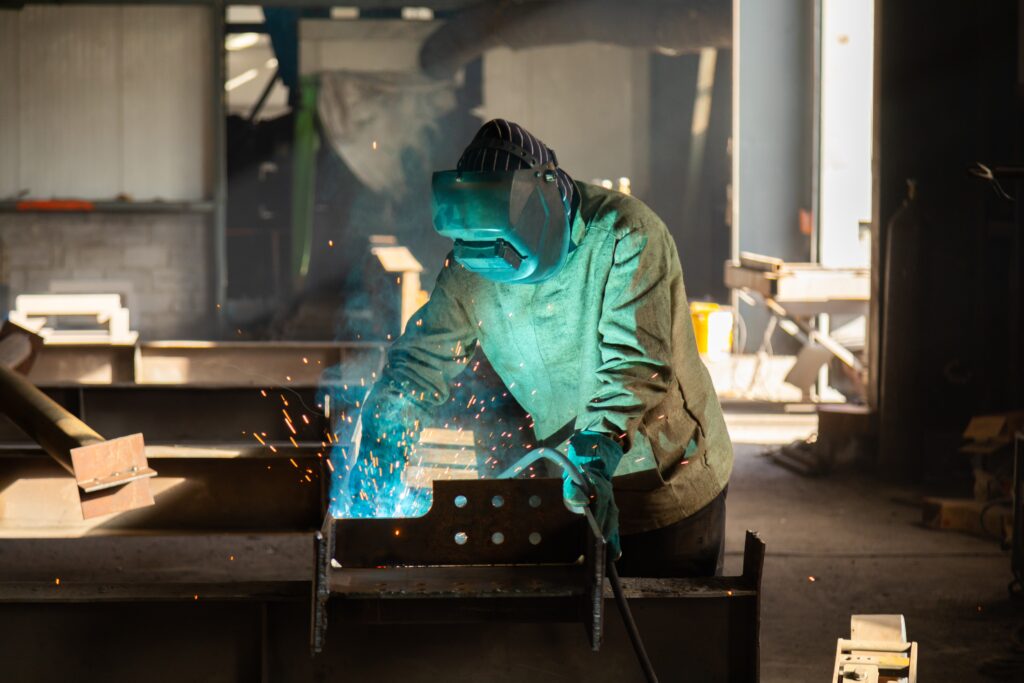If you’re curious to know how long it takes to master the art of welding, you’re in the right place! In the comprehensive article “How Many Years Does It Take To Get Good At Welding?” we’ll take you through an engaging and thoughtful exploration of the timeframes that mediocrity and mastery demand in the welding industry. This guide is so much more than its title—it encompasses expert opinions, real-life anecdotes, and handy tips for aspiring welders on their journey to becoming professionals. Regardless of whether you’re a rookie, an old hand considering a career switch, or simply intrigued by the craft of welding, this tailor-made guide is set to serve as your ultimate go-to resource.

Understanding the Basics of Welding
Before we begin our deep dive into the world of welding, let’s get comfortable with the absolute basics.
Definition of Welding
Simply put, welding is a fabrication process. It involves the joining of two or more parts, typically metals, by producing coalescence. This is commonly achieved by melting the pieces, adding a filler material to form a molten material pool that cools to become a sturdy joint. However, the fundamental principle is that through heat or pressure, it forms a bond between different parts.
Different Types of Welding Techniques
Welding can be achieved using different techniques or processes. The most common ones include Shielded Metal Arc Welding (SMAW), Gas Metal Arc Welding (GMAW/MIG), Gas Tungsten Arc Welding (GTAW/TIG), and Flux-Cored Arc Welding (FCAW). Each of these techniques offers different benefits and is used in various situations—from underwater welds to automotive repair.
Possible Dangers and Precautions in Welding
Like any industrial process, welding comes with its potential hazards include burns, eye damage, inhalation of toxic fumes, and even electric shock. However, don’t let this scare you. With proper safety measures, equipment and training, these risks can be effectively mitigated. It’s vital to don protective gear, including helmets with protective lenses, gloves, and safety shoes.
Determining What Good Welding Entails
Quality of Welds
Every good welder aims for creating high-quality welds. These are characterized by a thorough fusion, consistent bead, and lack of defects such as cracks, porosity or inclusions. Such welds ensure the joint’s strength, complying with given standards and specifications in different applications.
Efficiency and Speed
Good welding also hinges on efficiency and speed. Proper technique and skill allow you to weld faster, saving on both time and resources. However, remember—quality should never be compromised for speed.
Safety at Work
Safety is a critical aspect of good welding. It involves adhering to safety precautions and using protective gear properly. Remember, a safe welder is a good welder.
Consistency
Consistency is crucial in welding. The ability to replicate good quality welds consistently denotes mastery in welding. It underlines the understanding of the technique and process, paving the path to becoming an excellent welder.

Factors Affecting Learning Speed
Individual Learning Pace
Everyone has a unique learning pace. Some people may pick up the skills faster, while others might take some extra time. And that’s perfectly fine. The bottom line is the consistent effort towards learning and improving.
Prior Experience in Similar Fields
Prior experience in similar fields or hobbies that involve careful hand-eye coordination, such as sculpture or automotive repair, may help accelerate the learning process. But remember, lack of experience doesn’t mean you can’t be good at welding.
Quality of Training and Resources Available
The quality of training significantly affects how quickly and well you learn. Having access to good training programs, resources, and equipment can greatly aid the learning process.
Getting an Education in Welding
Role of Welding in Vocational and Technical Schools
Technical and vocational schools play a crucial role in providing formal education in welding. They offer comprehensive programs designed to impart essential welding skills, safety practices, and knowledge about various welding processes.
Average Length of Welding Courses
The length of welding courses varies from several weeks of basic training to two-year associate degree programs. The time depends on the level of proficiency you aim to achieve, the complexity of the skills you’re learning, and the specific requirements of any certification you’re pursuing.
What is Covered in These Courses?
In a welding course, you’ll learn everything from the different types of welding techniques to welding physics. You’ll gain practical skills, understand safety measures, and work with a variety of materials. Some courses may also incorporate lessons on blueprint reading and welding symbols.

Skills Needed to Be a Good Welder
Physical Fitness Requirements
Good physical strength, hand-eye coordination, and manual dexterity are essential skills for a good welder. welding often involves standing for long periods, lifting heavy objects, and working in different weather conditions.
Level of Comfort and Familiarity with Equipment
Comfort and familiarity with the welding equipment are key factors. The ability to accurately adjust and control the equipment significantly increases the quality and efficiency of your welding.
Attention to Detail
welding is a precision-based job that demands keen attention to detail. A good welder can identify minor defects or variations that can affect the overall strength and quality of the weld.
Practical Training and Apprenticeships in Welding
Apprenticeship and Their Importance
Apprenticeships offer hands-on learning and practical experience that classroom lessons can’t provide. They allow aspiring welders to work alongside experienced professionals and learn from real-world projects.
How Long Does an Average Apprenticeship Last?
Apprenticeships can last anywhere between three to five years. The specific duration depends on the apprenticeship program and the level of expertise you aim to acquire.
What Skills Can Be Learned During an Apprenticeship?
Apprenticeships provide comprehensive training in all areas of welding. You learn about safety procedures, types of welding procedures, and usage of tools and equipment. You also gain invaluable on-the-job experience, teamwork, and problem-solving skills.
Importance of Continued Practice
Why Regular Practice is Essential
Just like any other skill, welding improves with practice. Regular practice helps hone your skills, increases speed, and ensures consistency.
How Much Practice May Be Needed to Become Proficient?
The amount of practice needed varies from individual to individual. Some might need thousands of hours, while others might need less. It depends largely upon your dedication, previous experience, and natural knack for the craft.
Role of Certification in Welding
Common Welding Certifications
There are multiple certifications in welding, including those from the American Welding Society (AWS), the Canadian Welding Bureau (CWB), and the American Society of Mechanical Engineers (ASME).
How Long It Takes to Become Certified
Generally, it takes between six months to two years to become a certified welder, depending on the certification’s requirements and your dedication to training and practice.
Benefits of Getting Certified
Certification verifies your skills to employers, potentially increasing job prospects and earnings. It proves that you can produce quality work under specified standards.
Advanced Skills and Specialization in Welding
Identifying Areas of Specialization
Just like in medicine or law, there are areas of specialization in welding, such as underwater welding, pipeline welding, or aerospace welding. Identifying your specific area of interest will allow you to excel and become a master in that specific realm.
How Specializing Can Impact the Learning Timeline
Specialization might slightly extend the learning timeline as it might involve learning more complex and highly technical skills. However, it also means that you become an expert in that particular area, increasing your marketability.
Assessing Average Time to Get Good at Welding
Average Time for Formal Education
Formal education in welding might take a few months to two years, depending on the type of course or program you enroll in.
Time Spent in Apprenticeships and Practical Training
Typically, apprenticeships in welding last between 3 to 5 years. While it might seem like a long time, remember, these years are spent gaining immense practical experience.
Accounting for Continued Practice and Specialization
Ultimately, getting good at welding isn’t a destination, but a journey. It will require continuous practice, even after formal education and training. If you decide to specialize, it might add a bit more to your timeline, but it will also make you highly proficient in that area.
In conclusion, how many years does it take to get good at welding? There’s really no one-size-fits-all answer, as it depends on individual learning pace, the quality and amount of training, and the level of proficiency and specialization you’re aiming for. But with dedication and continuous effort, you’ll get there. happy welding!
